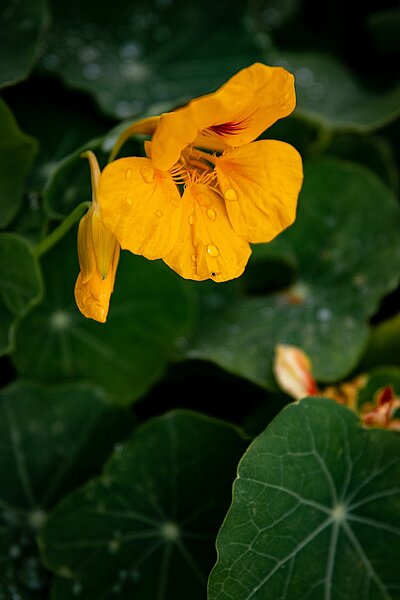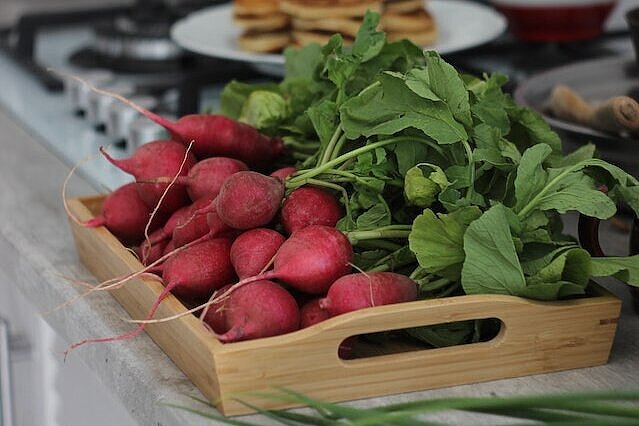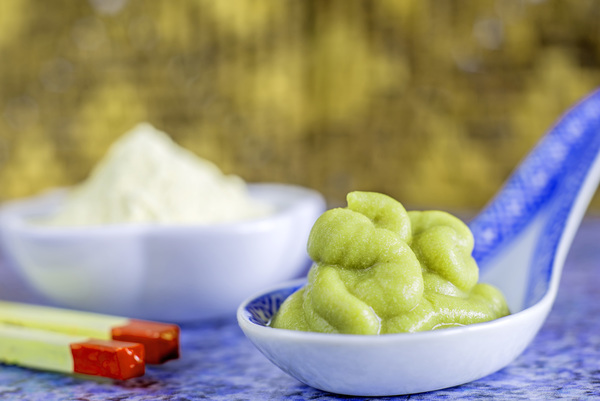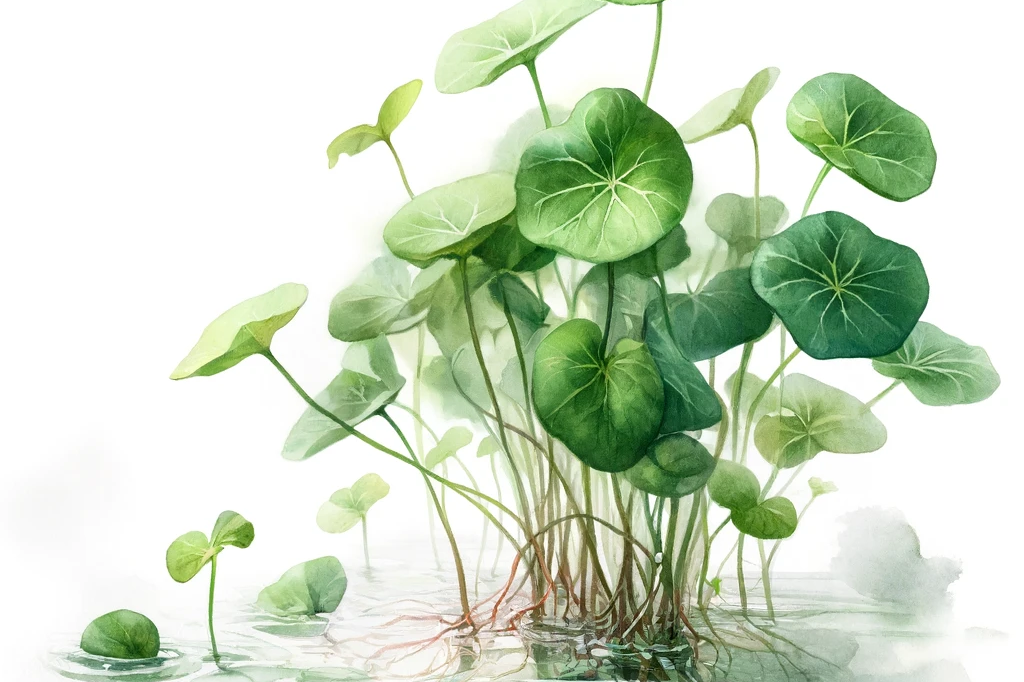Bulbous nasturtium

What is tuberous nasturtium?
The tuberous nasturtium (Tropaeolum tuberosum) belongs to the cruciferous family and originates from the Andes in South America. It has been cultivated and used as food there for centuries. The plant forms climbing shoots with round leaves and bright orange or yellow flowers. The flowers are edible and have a pungent taste. However, the real special feature of the tuberous nasturtium is its underground tubers, which look like small potatoes and can also be eaten.
The tubers have a sweet taste with a slight pungency and contain many valuable ingredients such as vitamin C, iron, potassium and mustard oil glycosides. These have an antibacterial, antiviral and immune-boosting effect. The tubers can be eaten raw or cooked or processed into flour.
How can you give your dog bulbous nasturtium?
If you want to add some variety to your dog's diet or help him with certain ailments, you can give him bulbous nasturtium. You can offer him either the fresh or dried flowers or the fresh or cooked bulbs.
You can, for example, sprinklethe flowers over the food as decoration or give them as a treat between meals. They have a pungent taste that many dogs like. The flowers can help with colds, coughs or respiratory infections.
You can cut the tubers into small pieces, either raw or cooked, and mix them into their food or offer them as a snack. They have a sweet taste with a slight spiciness. The tubers can strengthen the immune system, aid digestion and help with skin problems.
What are the benefits of bulbous nasturtium for dogs?
Bulbous nasturtium has many benefits for dogs:
- It is rich in vitamin C, which is important for the immune system.
- It contains mustard oil glycosides, which have antibacterial, antiviral and anti-inflammatory effects.
- It can help with respiratory diseases.
- Itpromotes digestion thanks to its fiber.
- Ithelps with skin problems thanks to its wound-healing properties.
- It offers variety in the diet thanks to its exotic taste.
What are the disadvantages of bulbous nasturtium for dogs?
Bulbous nasturtium also has some disadvantages for dogs:
- It can cause gastrointestinal discomfort in sensitive dogs due to its pungency.
- It can trigger allergic reactions in dogs with an intolerance to mustard oil glycosides.
- Itcan increase the effect of blood-thinning medication due to its anticoagulant effect.
- It can influence thyroid function due to its iodine content.
How much bulbous nasturtium should you give your dog?
As with all new ingredients, you should only introduce bulbous nasturtium to your dog in small quantities and gradually. Observe how he reacts to it and whether he likes it at all. If you don't notice any negative effects, you can slowly increase the amount.
There is no general recommendation for the dosage of bulbous nasturtium, as it depends on various factors such as your dog's weight, age and state of health. However, you can use the following as a guide:
- For small dogs (up to 10 kg), a few flowers or a teaspoon of tubers per day is sufficient.
- For medium-sized dogs (10 to 25 kg), you can give two to three flowers or a tablespoon of tubers per day.
- For large dogs (over 25 kg), four to five flowers or two tablespoons of tubers per day are appropriate.
However, you should not allow bulbous nasturtium to make up more than 10% of the daily food ration. You should also always make sure that your dog drinks enough water to avoid possible irritation of the gastrointestinal tract.
Where can you buy bulbous nasturtium?
Bulbous nasturtium is still relatively unknown in Germany and therefore not as easy to obtain as other herbs or vegetables. However, you have various options for obtaining this exotic ingredient:
- You can order it online from specialized suppliers.
- You can grow it yourself in your garden or on your balcony. All you need are a few tubers of the plant. Planting time is in spring and harvest time in fall. The plant needs a sunny location and slightly acidic soil.
- You can look for it on the market or in the health food store, where it is sometimes sold under the name Mashua. This is the name of the plant in its native Peru.
Bulbous nasturtium is an interesting ingredient for your dog that can bring him many health benefits. It has an exotic taste and a strong effect against bacteria and viruses. However, you should always be careful when dosing and introducing this plant into your dog's diet. If you are unsure or have any questions, it is best to consult your vet.
If you notice any signs of hypersensitivity or poisoning in your dog, you should see your vet immediately. We are not a substitute for a vet, but we try to be as accurate as possible. Every dog reacts differently and we recommend you get a second opinion or consult your vet if in doubt.
Stay healthy and take good care of your four-legged friend!😊
Similar to Bulbous nasturtium
Horseradish (Armoracia rusticana) is a plant from the cruciferous family, which also includes cabbage, radishes and mustard. The plant forms a thick, fleshy root that can grow up to 60 cm long and 6...
Radishes belong to the cruciferous family, which also includes broccoli, cabbage and mustard . They contain a lot of mustard oil, which is responsible for their typical taste. They also have a high...
Wasabi (Eutrema japonicum) is a plant species that is native to Japan. It grows in marshy areas at the edge of watercourses and forms fleshy rhizomes that are used as a spice. The rhizomes are...
Watercress (Nasturtium officinale) is a winter-green, perennial plant that can grow up to 70 centimetres high. It has hollow stems that lie or float in water and leaves that are pinnate. The leaves...



